Reasons to fit flat bar on gravel bikes
Within the diversity of approaches to gravel, there are those who choose to leave the characteristic road handlebars behind in favour of a straight one. A type of handlebar that has its advantages and disadvantages compared to the usual curved ones. Find out which is the most interesting option when it comes to equipping your gravel bike.

Flat Bar on gravel, yes or no?
When some describe what gravel is, it is often said that it is like the mountain bike of the 90s but with modern and more advanced bikes, a similarity that is undoubtedly increased with the appearance of models equipped with straight handlebars.
An option that breaks away from the typical gravel bike aesthetic in which the characteristic curved, road bike style handlebars have been one of the hallmarks of the gravel bike. The question for those considering fitting their gravel bike with straight handlebars is how this will affect the bike's handling. Let's look at all the implications of using straight handlebars.
Position on the bike
RECOMENDADO

10 tips for safer and faster downhills on road bikes
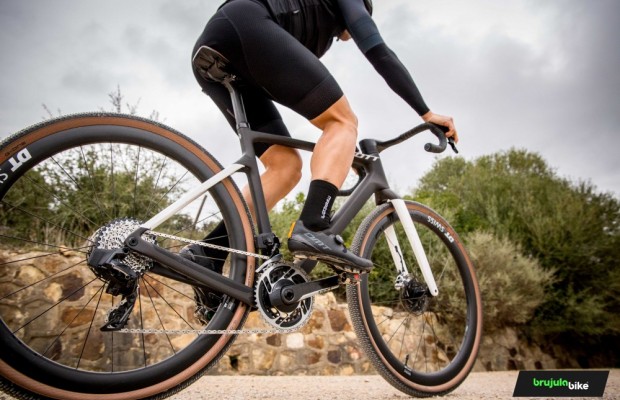
The best gravel groupsets of the moment

How to lose body fat? Differences between losing weight and losing fat

When must the tubeless tire sealant be replaced? What quantity?

The real importance of signing up for a race

Don't overlook your nutrition when training in cold weather
When we grip the handlebars, the most common position when using the usual curved handlebars, we are actually doing so in front of the axis that marks the handlebars, which, for practical purposes, increases the effective reach of the bike. This results in a more stretched and aggressive rider position.

Straight handlebars, on the other hand, are the opposite, not only reducing the reach to that of the stem, but even slightly behind it, as most handlebars have a slight sweep to the rear. In this way, the rider will have a more upright and comfortable position on the bike. In fact, a few years ago it was not uncommon to find road bikes with straight handlebars in the brand catalogues in order to give the cyclist that more relaxed position, a type of bike that some brands still maintain under the name of hybrid or fitness.
In any case, this shorter reach, together with the greater width of the straight handlebars, also has an effect on the handling of the bike by making the steering faster, something that brands that have models fitted as standard with straight handlebars usually solve by installing a fork with a lower dropout in order to increase the steering trail figure, thus smoothing out the handling.
Grip
Although the straight handlebars provide a more relaxed position for the rider, they have the disadvantage of offering only one position to hold on to: at the ends by holding on to the grips. On the other hand, this single position means that everything is always in place and within easy reach, i.e. we will always brake in the same way and reach the shifters with the same gesture.
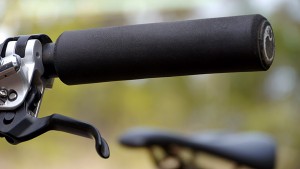
On the other side, the road bike style handlebar has three grip points: the most common one on the levers; in the horizontal area, used for climbing and relaxed pedalling; and in the curve of the handlebar, which is used for a firmer grip on downhills or for better aerodynamics when pedalling fast.
This variety of positions means that the controls are operated differently. For one thing, if we hold the bike horizontally, we can't quickly operate the gears or the brakes, which are out of reach. At the top, everything is at hand but more force is needed on the brakes to stop the bike, and if we opt for the handlebar bend, everything is at hand but it is a more demanding position for the rider.
Handlebar space
On gravel we usually need more space to install accessories on the handlebars. Apart from the bike computer, bikepacking bags, lights when we face the long distance routes that races usually propose, or the video camera with which we collect every detail of our routes are common.
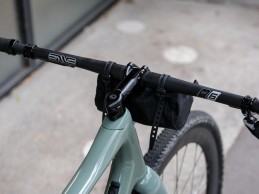
The straight handlebar, with its greater width and taking into account that no space is reserved in its horizontal area for gripping, leaves much more free space to install all the accessories that we may require on our routes.
Gravel style
The decision between using a straight handlebar or the usual road-style handlebar will also depend on the type of gravel riding you do. For those who are closer to mountain biking in their approach to gravel riding, with more complicated terrain with trails and more or less technical areas, straight handlebars will be an ally that will give them more stability and more precise control of the bike.
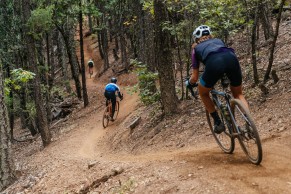
On the other hand, for those who understand gravel as a combination of road and trail sections, or have a more sporty approach to the discipline, the curved handlebars will provide a more aerodynamic and effective position, as well as a feeling much closer to that of a fast road bike.
Independent components
If in the event of a crash or failure we damage part of a lever of our curved handlebars, the issue can be quite expensive. Everything is integrated in them, so the most normal thing is that we have to replace it completely, with the disbursement that this supposes.
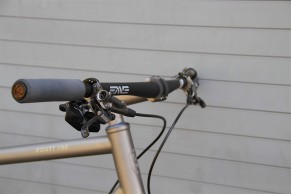
In the case of mountain bike components that are fitted to straight handlebars, brake and shifter levers are independent elements, so having a failure in one of them only limits the damage to that element, which will cost less to replace than what we would have to invest in the case of an integrated component.